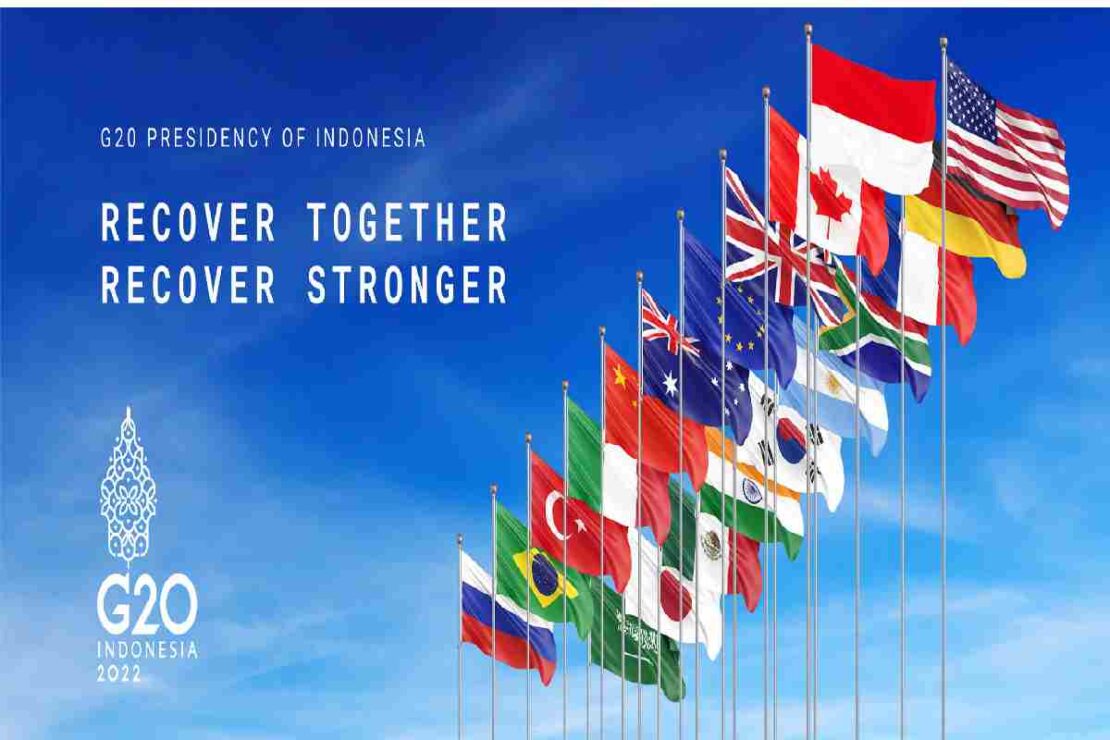The Group of G20 is the main forum for international cooperation in the most excellent essential features of the global economic and financial agenda. It brings together the world’s major progressive and developing economies. The group of G20 includes Argentina, Australia, Brazil, Canada, China, EU, France, and Germany. Also India, Indonesia, Italy, Japan, Mexico, and Russia. Also, Saudi Arabia, South Africa, South Korea, Turkiye, the United Kingdom and the United States. The group of G20 countries together represent about 90% of the GDP, 80% of world trade and two-thirds of the world population.
The Objectives Of The group of G20 Are:
- a) Coordination of policies among its members to achieve global economic stability and sustainable growth;
- b) Promote financial regulations that reduce risk and prevent future financial crises;
- c) And make a new international financial architecture.
Origin And Evolution
The G20 shapes in response to both the financial crises that broke out in various emerging economies in the 1990s and a growing awareness. Also, that some of these Countries remain understated in global economic debates and governance. In December 1999, finance ministers and central bank governors of advanced and systemically important emerging countries saw for the first time in Berlin, Germany. Also, to informal dialogue on critical issues for global economic stability. Since then, Finance Central Bank ministers and governors meet yearly. India hosted a conference of G20 finance ministers and central bank councils in 2002. The G20 was elevated to the 2008 Summit to address the 2008 global financial and economic crisis.
The Group of G20 Organizational Structure
The G-20 operates without a secretariat or permanent staff. The process of preparing for the G20 Summit carries out through the Sherpa and Finance track. Also, that prepare and monitor issues and commitments adopted at the Summits. The chair rotates yearly among the members and chooses from a different regional grouping of countries. He, the president, is part of a rotating leadership group made up of three members from past. And. present and future chairs known as Troika. The recent chair of the G-20 in Mexico; the following chair is Russia.
Also, the Sherpas’ Track focuses on non-economic and financial aspects of issues such as development, anti-corruption and food security. In contrast, they are addressing internal elements such as the rules of procedure of the G20 process. Sherpas are playing important planning, negotiation and implementation tasks on an ongoing basis. Finance Track emphasizes economic and financial issues. Sherpa and finance both tracks it based on the technical and substantive work of some experts. In addition, the thematic agenda develops through the organization of various ministerial meetings, such as the Joint Meeting on Finance and Development ministers and meetings of ministers of labour, agriculture and tourism.
Group of G20 Leaders Summits.
So distant, there take been four G20 summits. Also, the first summit swarm by the United States—President in Washington in November 2008 to grow a synchronized response to the global monetary crisis.
First Summit, the leaders deliberated the causes of the global economic and financial crisis. They agreed to implement an action plan around three main objectives, namely (i) Restore world growth, (ii) Strengthen the international financial system, and (iii) reform international financial institutions.
The second London summit in April 2009 proposed a recovery plan for $1.1 trillion to restore credit and growth and strong regulatory provisions, growth of the Financial Stability Forum (retitled the “Financial Stability Board” or FSB) Basel Banking Supervision Committee (BCCB). A reiteration of the commitment against protective trends (counting trade, investment and services) and promise to the improvement of international monetary institutions.
And, The Third Summit in Pittsburgh in September 2009 chose the G20 as the “first forum” of international economic cooperation. The main results of the Pittsburgh Summit included fostering a “Framework for strong, maintainable and sustainable development” Balanced Growth”. In the 21st century through sound macroeconomic policies to prevent boom. And bust cycles through a Mutual Assessment Process (MAP) or review’
Which is co-chaired by India, a choice to reform the IFIs by moving the IMF quota share in dynamic emerging markets. And, developing countries (EMDC) of at least 5% from overrepresented countries to underrepresented countries.
Also, adoption of an active formula that allows the World Bank to generate an increase of at least 3% in the voting rights of developing and transition countries underrepresented. And ensure that the world The Bank and the regional development banks (RDBs). Also have sufficient resources to World tests.
Also, The Fourth Summit in Toronto in June 2010 under the theme “Retrieval and New Beginnings” focused on the “Framework for strong, maintainable and balanced growth”. And the completion of Phase I work comprising the MAP (or “peer review”) by groups of the countries.
The advanced economies are commits to putting their public finances in order, i.e., halving the budget deficit for 2013 and debt stabilization for 2016 as part of the internal rebalancing. An Agreement was also reached on the differentiated approach to consolidate growth. And, they recovery strategies versus exit strategies and fiscal consolidation, i.e. consolidation’. “Development” was first put on the G20 agenda to be handled by a high-level development working group (DWG).

